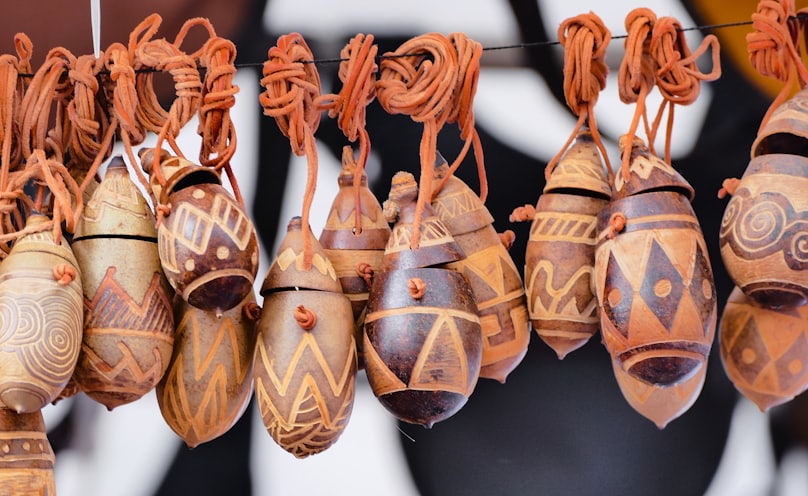The Art of the Fulani
The Fulani people are well known for the delicate decoration of utilitarian objects such as milk bowls that reflect their nomadic and pastoral lifestyle. The history of the Fulani in West Africa begins in the fifth century A.D. Islamized early on and travelling constantly, they did not develop a tradition of figural, sculpted art. The complex nature of art among this large and long-established group in West Africa is widely recognized.


The Fulani people are well known for the delicate decoration of utilitarian objects such as milk bowls that reflect their nomadic and pastoral lifestyle. The history of the Fulani in West Africa begins in the fifth century A.D. Islamized early on and travelling constantly, they did not develop a tradition of figural, sculpted art. The complex nature of art among this large and long-established group in West Africa is widely recognized.
Fulani artists are primarily known for decorated gourds, textiles, hairstyles and personal adornment. In terms of style and color, Fulani art commonly features geometric shapes as motifs and meticulous details-, especially in textiles and gourds, and the use of black, red, yellow and white.
Gourds decorated by Fulani artists range from those with a plain to an elaborate patterned surface. They commonly take one of the four following shapes:
1. globular;
2. flattened globular;
3. tubular and
4. bottle shaped.
When decorating gourds, Fulani women use abstract motifs, such as circles, squares, triangles and lines, as well as figural motifs such as people, camels, and airplanes. There are two main methods of decoration: pyro-engraving and pressure engraving. Pyro-engraving involves burning lines into the surface of the gourd with a hot metal blade, while pressure engraving generally consists of using a jalbal (an iron point). Pressure engraving designs created by pastoral Fulani generally take two forms: 1), “vertical arrangements of motifs around the outer edge area leaving the center free” and 2), a design divided into into four equal parts, which means greater use of the gourd’s surface area.
Kaakel demonstrate that gourds are an important part of a woman’s social and economic status. Kaakel is a way for women to display fifty or more gourds encased in wooden mesh supported by two wooden poles. Because gourds are lightweight and easy to transport, they provide an ideal art form for those who lead a nomadic lifestyle.
In the Middle Niger area of Mali, there is a renowned class of male weavers known as the madoube. Men typically weave while women spin wool and cotton. One type of textile produced by the madoube is called khasa. These range in size from approximately 3.9 to 4.2 feet (1.2 – 1.3 meters) by six to eight feet (1.8 to 2.4 meters). Herders use khasa to keep warm and ward off mosquitoes. The dominant color is white, but black, red and yellow are also used. They feature patterns containing triangles, chevrons, and lines.
Personal adornment is an important part of gerewol, the beauty competition during which three of the most beautiful maidens choose the most handsome Fulani man. Men line up and dance for hours while making exaggerated facial expressions and standing on their tip-toes to showcase their charm. Men use red-colored ocher on their faces, tight wrappers around their hips, white ostrich plumes on their headdresses, and strings of white beads crisscrossing their chests. They use black make-up on their lips and rims of their eyes to highlight the whiteness of their teeth and eyes.


